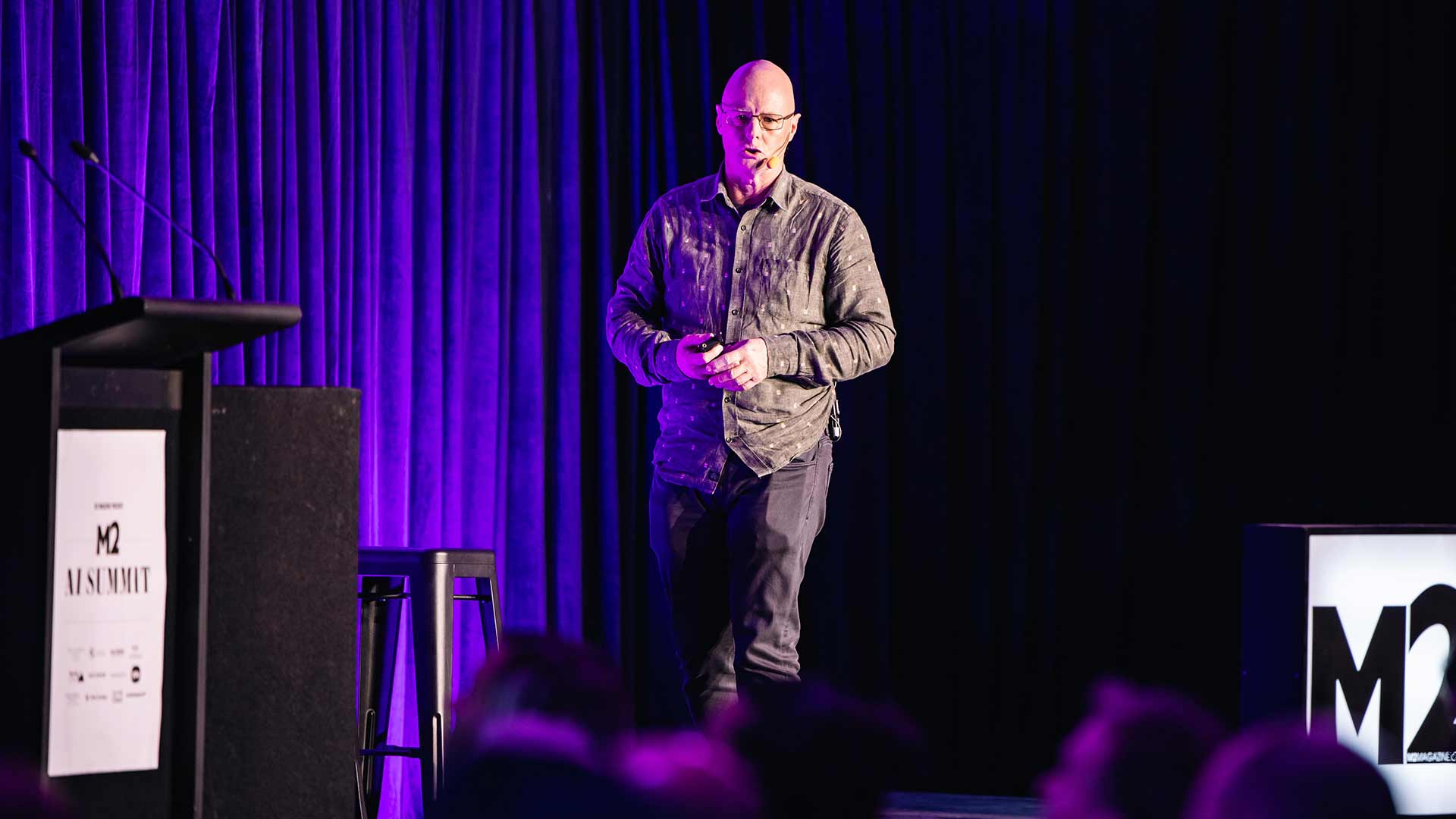How To Increase Productivity With AI & Machine Learning
Paul Roseman, the General Manager of Strategic Development at ProCare, took the stage to share his three-decade-long journey of driving innovation within the healthcare sector. In a fireside chat, Paul shed light on how AI and machine learning are not just buzzwords but essential tools that are reshaping healthcare productivity.
Paul began by acknowledging the tumultuous state of healthcare today. “If you’ve been following the news at all, you’ll realise that healthcare is what you might describe as a bit of a basket case right at the moment. So, there’s a lot of opportunity for productivity improvement,” he said, setting the tone for his talk.
Paul’s first example delved into the application of Robotic Process Automation (RPA) in assessing cardiovascular risk. This might sound like technical jargon, but the implications are profound. “We spend a lot of time trying to figure out who we need to spend our time with, which is a little bit of an irony,” Paul quipped. By automating the process of identifying high-risk patients, ProCare could significantly cut down on the busywork that bogs down healthcare professionals. “Every time we do three of these with the computer, we give the opportunity to talk to one of those people for a 15-minute consultation about what to do about their risk instead of trying to find them,” Paul explained. This automation tool, implemented in 12 practices, freed up time equivalent to 3 full-time nurses. The result? More personalised care for patients who need it most.
The second example focused on a machine learning module designed to streamline MRI ordering by general practitioners (GPs). Traditionally, GPs had to refer patients to specialists just to order an MRI, leading to multiple visits and delays. “By allowing the GPs to order the MRIs, it basically takes out on average 1.7 specialist visits for every time they order an MRI,” Paul noted. This programme not only reduced the cost and wait times but also improved patient outcomes. “Specialists are five times more likely to operate on the people we refer through this programme than the people we refer without an MRI,” Paul highlighted. The machine learning module reviews referrals and ensures appropriate use, fostering trust and efficiency.
The final example introduced Nabla Copilot, an AI tool that listens to doctor-patient consultations and transforms them into structured medical notes. “Most doctors didn’t train as typists,” Paul remarked, pointing out the inefficiency of doctors spending valuable time on documentation. Nabla Copilot captures the entire conversation, allowing doctors to focus on patient interaction. “It reduces the time spent on documentation because you don’t only use it for this; you actually also could use it for writing referral letters and various other things,” Paul elaborated. Beyond saving time, Nabla Copilot supports multiple languages, addressing the equity issues faced by non-English-speaking patients.
Throughout his talk, Paul stressed the importance of ethical considerations in deploying AI and machine learning in healthcare. “We’re really worried about AI making clinical decisions,” Paul admitted. Tools like Nabla Copilot should assist, not replace, human judgement. He encouraged doctors to involve patients in reviewing AI-generated notes to ensure accuracy and build trust.
In the Q&A session, the moderator asked, “Are you optimistic that we can shift the dial in terms of that basket case?” Paul’s response was candid yet hopeful. “I’ve been here for 30 years; I have to be optimistic. The deeper the crisis, the more innovative we get.”


